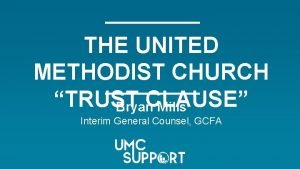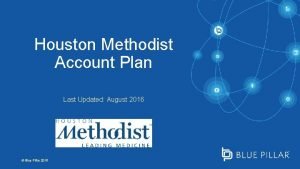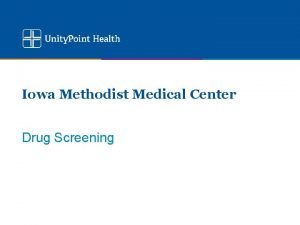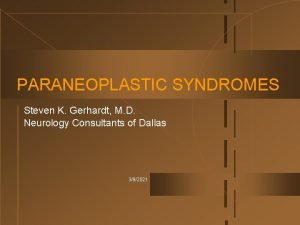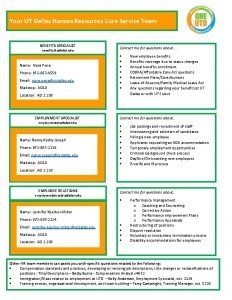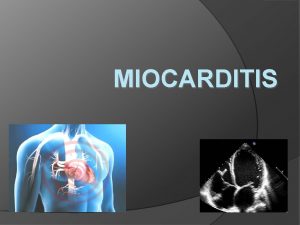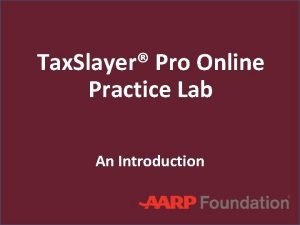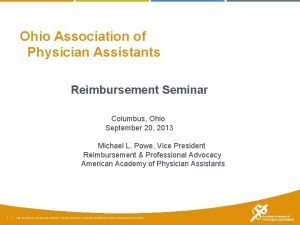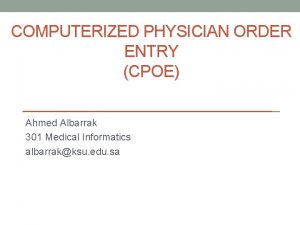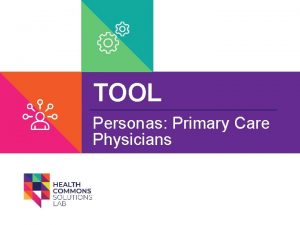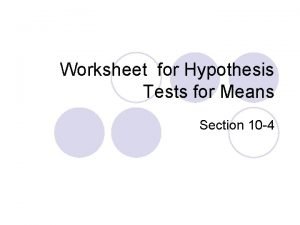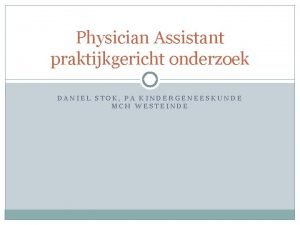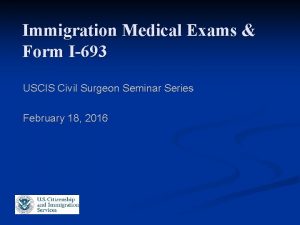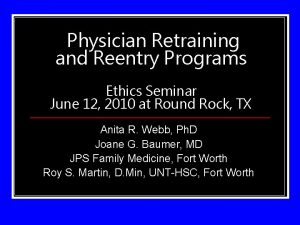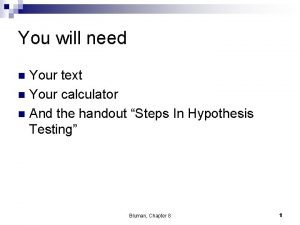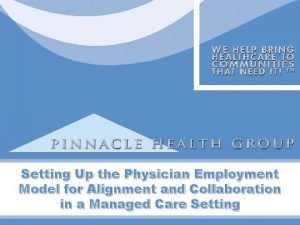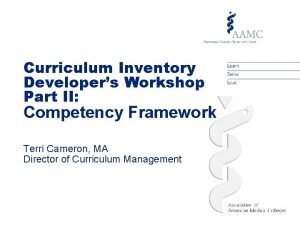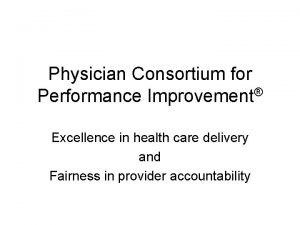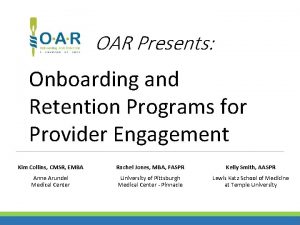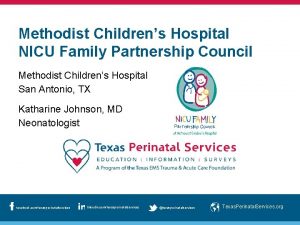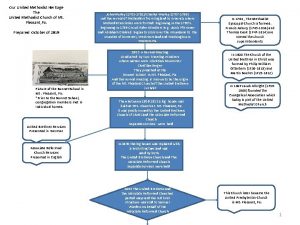DALLAS METHODIST PHYSICIAN NETWORKUNIVER SAL AMERICAN HCCHEDIS PHYSICIAN



























































































- Slides: 91

DALLAS METHODIST PHYSICIAN NETWORK/UNIVER SAL AMERICAN HCC/HEDIS PHYSICIAN EDUCATION DINNER SEPTEMBER 25 & 26, 2013 DALLAS, TEXAS

MAXIMIZING HCC RISK VALUE TO THE PATIENT AND TO THE PRACTICE JAMES L. HOLLY, MD CHIEF EXECUTIVE OFFICER SOUTHEAST TEXAS MEDICAL ASSOCIATES, LLP

HCC Risk Value Structure, Organization and Concepts of the Hierarchical Condition Categories (HCC) ▪ 15, 000 ICD-9 codes were organized into 189 HCCs. ▪ 5, 243 ICD-9 Codes, contained in 70 HCCs, were included in the HCC/Rx. HCC list. ▪ A coefficient (a number) was assigned to each selected code, which translated into an enhanced payment for the diagnosis. ▪ Most of those excluded were for various reasons most commonly because of potential for abuse or because they did not add to the cost of care of the patient.

HCC Risk Value ▪ Established in 2004 to reward Medicare + Advantage programs who do not “cherry-pick” only well Medicare beneficiaries. ▪ The HCC/Rx. HCC Codes have value in Medicare Advantage, Medical Home and ACO. ▪ It is anticipated that practices which are Medical Homes will be paid based on the level of MH recognition and on the total value of the HCC/Rx. Hcc coefficient aggregate. ▪ The highest per member per month reimbursement will be fore NCQA Tier III and a coefficient aggregate of 2. 0 and higher.

General Concepts ▪ In 2007, Medicare Advantage programs were funded by CMS using both demographics (AAPCC) and the Hierarchical Conditional Codes known as HCC. ▪ 2007 was the year that RX HCC codes were added to complement the reimbursement for managing patients with other illnesses which while they did not rise to the level of complexity and cost-for-care, as the HCC diagnoses, they did qualify for a lower additional payment due to increased medication costs.

General Concepts ▪ The Rx. HCC designations cover many diagnoses not covered in the HCC. They represent an enhanced payment due to the medication cost of treating the condition. ▪ Almost all HCC diagnoses are also Rx. HCC codes, but NOT all Rx. HCCs are also HCCs. ▪ While HCCs have a greater value, there are so many more Rx. HCCs than HCCs, the total revenue from Rx. HCCs will typically exceed the total revenue from HCCs.

HCC Risk Value CMS identified ten principles which guided the creation of Hierarchical Conditions Categories. The following of those principles should impact provider documentation of these codes…

HCC - Principle 1 ▪ Diagnostic categories should be clinically meaningful. ▪ Conditions must be sufficiently clinically specific to minimize opportunities for gaming or discretionary coding. ▪ Clinical meaningfulness improves the face validity of the classification system to clinicians, its interpretability, and its utility for disease management and quality monitoring.

HCC – Principle 5 ▪ The diagnostic classification should encourage specific coding. ▪ Vague diagnostic codes should be grouped with less severe and lower-paying diagnostic categories to provide incentives for more specific diagnostic coding, i. e. , “CAD” grouped with CHF, Acute MI, Chronic Stable Angina, etc.

HCC – Principle 6 ▪ The diagnostic classification should not reward coding proliferation. The classification should not measure greater disease burden simply because more ICD 9 -CM codes are present. ▪ Hence, neither the number of times that a particular code appears, nor the presence of additional, closely related codes that indicate the same condition should increase predicted costs.

HCC – Principle 7 ▪ Providers should not be penalized for recording additional diagnoses (monotonicity). ▪ This principle has two consequences for modeling: 1. No condition category should carry a negative payment weight, and 2. A condition that is higher-ranked in a disease hierarchy (causing lower-rank diagnoses to be ignored) should have at least as large a payment weight as lower-ranked conditions in the same hierarchy.

HCC – Principle 10 ▪ Discretionary diagnostic categories should be excluded from payment models. ▪ Diagnoses that are particularly subject to intentional or unintentional discretionary coding variation or inappropriate coding by health plans/providers, or that are not clinically or empirically credible as cost predictors, should not increase cost predictions. ▪ Excluding these diagnoses reduces the sensitivity of the model to coding variation, coding proliferation, gaming, and up coding.

HCC Risk Value ▪ The coefficients from different categories accumulate to additional payments for the patient's care. ▪ For example, a male with heart disease, stroke, and cancer has (at least) three separate HCCs coded, and his predicted cost will reflect increments for all three problems. ▪ However, the HCC model is more than simply additive because some disease combinations interact. For example, the presence of both Diabetes and CHF could increase predicted cost by more than the sum of the separate coefficients for people who have diabetes or CHF alone.

HCC Risk Value ▪ Also, the patient’s age and gender will play a part in the HCC/Rx. HCC coefficient aggregate. For instance, unrelated to any diagnosis, a 74 year old female will have an HCC coefficient of. 46 added to the total coefficient aggregate score based simple on age.

HCC vs. Rx. HCC ▪ Here are some examples of diagnoses which are not HCC but are Rx. HCC codes: ▪ Hypertension is not an HCC (i. e. , 401. 1 or 401. 9, etc. ) but hypertension is an Rx. HCC. ▪ Osteoporosis, another common illness, is not a medical HCC but is an Rx. HCC. ▪ CAD in itself is not a medical HCC, but it is an Rx. HCC. Because CAD is a general term, it is imperative that if the patient has angina or an old MI, the chronic problem list should include angina or old MI as they are HCC diagnoses. (Note : in 2014 “old MI” is being dropped as an HCC. )

HCC Risk Value ▪ HCCs are assigned using hospital and healthcare provider diagnoses from any of five sources: 1. Principal hospital inpatient 2. Secondary hospital inpatient 3. Hospital out-patient 4. Physician , CFNP, PA 5. Clinically trained non-physician (e. g. , psychologist, podiatrist)

New Auditing Policy Announced 2008 ▪ CMS issued a new audit policy regarding HCCs. They have also announced a substantial change in what they will do when they find a problem with coding. In the past, any coding problems were fixed for just the specific codes that were in error in the audit – i. e. the exposure was minimal. Going forward the percent of error will be applied to the total HCC/Rx. HCC report.

New Auditing Policy ▪ The new procedure will assume they have audited an appropriate sample of codes and correct the entire payment amount by the sample error rate – i. e. extraordinary exposure. So a 5% error rate in the sample will result in a 5% reduction in premium – big. ▪ No one has seen detailed audit regulations yet. They may be having difficultly putting such a policy into place – but they strongly believe there is significant over coding going on across the industry – hence the reason for the new policy.

Requirements ▪ The requirements for successfully benefiting from the HCC Risk program are: 1. You must have a robust ICD-9 code list which is intuitively accessible by healthcare providers in the context of a patient encounter. 2. You must have a means of identifying which codes are HCC, Rx. HCC, or both.

Robust ICD-9 Codes

Robust ICD-9 Codes ▪ Depending upon how you count, there are over 15, 000 ICD-9 codes available to be used. However, the descriptions of those codes are either obscure or incomprehensible in the electronic versions published by CMS. ▪ Physicians typically utilize two hundred codes. ▪ In that there are 5, 243 ICD-9 codes that are HCC/RXHCC, that leaves a great deal of value untapped.

Requirements ▪ You must have a system which audits the validity of assigning those ICD-9 codes to a particular patient to avoid the potential for abuse in over-diagnosing patients for financial benefit. ▪ You must have a means for aggregating this information for reporting to the health plan and by the health plan to CMS. ▪ You must have a means of evaluating each of the HCC and/or Rx. HCC diagnoses and documenting that evaluation.

Robust ICD-9 Codes

Robust ICD-9 Codes

Robust ICD-9 Codes

Robust ICD-9 Codes

SETMA’s Strategy ▪ At each visit, providers can view the patients HCC/Rx. HCC status for both the acute visit and the patient’s chronic conditions. ▪ Chronic conditions which are an HCC or Rx. HCC, that have not been evaluated during the year, are highlighted in red to alert a provider to assess them before the end of the payment year.

Robust ICD-9 Codes

Robust ICD-9 Codes ▪ The following are examples of coding so as to maximize valid HCC/Rx. HCC codes rather than using non-specific diagnostic codes which are not HCC/Rx. HCC.

Robust ICD-9 Codes ▪ Chronic Kidney disease (CKD) vs. Renal insufficiency: ▪ Review GFR levels on labs and re-run labs within 3 months if GFR less <60. When GFR levels are consistently <60, use CKD unspecified 585. 9, or use specific level CKD III 585. 3 (GFR 3059), CKD IV 585. 4 (GFR 15 -29), or CKD V 585. 5 (GFR less than 15). Do not use Renal insufficiency 593. 9 if level is consistently <60. ▪ Cardiac arrhythmia vs. specified arrhythmia: ▪ Atrial Fib/PAF (427. 31), Atrial Flutter (427. 32), SSS/Sinoatrial Node Dysf (427. 81), PSVT (427. 0), Parox. Tachycardia (427. 2), Parox Ventric Tachycardia (427. 1) are specific and riskassessed. Cardiac arrhythmia 427. 9 is not risk-assessed.

Robust ICD-9 Codes ▪ Abuse vs. Dependence: ▪ Alcohol dependence 303. 90 is risk-assessed. Alcohol or drug abuse is not. ▪ The word “chronic” makes some diagnoses riskassessed: ▪ Chronic Hepatitis 571. 40 is risk-assessed vs. Hepatitis 573. 3, which is not. ▪ Chronic Hepatitis B 070. 32 is risk-assessed vs. Hepatitis B 070. 30, which is not.

Robust ICD-9 Codes ▪ Major, recurrent depression is risk-assessed: ▪ 296. X Episodic mood disorder (Mild 296. 1, Moderate 296. 2, Severe 296. 3) 296. 80 Bipolar disorder, unspecified ▪ 296. 90 Mood disorder, episodic, unspecified ▪ 296. 2 Major depression, single episode ▪ 296. 3 Major depression, recurrent episode ▪ Definition of mood disorder from Ingenix ICD-9 -CM for Physicians 2009 Expert: “Mood disorder that produces depression, may exhibit as sadness, low self-esteem, or guilt feelings; other manifestations may be withdrawal from friends and family, interrupted sleep. ” ▪ Unspecified depression is not risk-assessed: ▪ 311 Depression, not otherwise specified ▪ Must document the characteristics of the depression and it’s current status, i. e. Major depression - stable on meds, Bipolar disorder – not controlled, referred to Dr. Smith.

Robust ICD-9 Codes ▪ Code higher level DM and code manifestation: ▪ 250. 00 DM w/o Complication ▪ 250. 40 DM w/Renal Manifestations + CKD 585. 9, Nephropathy 583. 81, or Nephrosis 581. 81 ▪ 250. 50 DM w/Ophthalmic Manifestations + Glaucoma 365. 44, Macular Edema 362. 07, Retinopathy 362. 01 -362. 07, Cataract 366. 41, or Retinal Edema 362. 07 ▪ 250. 60 DM w/Neurological Manifestations + Polyneuropathy 357. 2, Gastroparesis 536. 3, Peripheral Autonomic Neuropathy 337. 1, Neurogenic Arthropathy 713. 5 ▪ 250. 70 DM w/Peripheral Circulatory Disorders + PVD 443. 81 ▪ 250. 80 DM w/Other Specified Manifestations + DM w/Ulcerations 707. 10, 707. 9, Bone Changes 731. 8, or Hypoglycemia (no add’l code) ▪ 250. 90 DM w/Unspecified Complication ▪ You may document the manifestation immediately without listing the higher level of manifestation category. ▪ i. e. instead of writing “DM with Renal manifestations”, which does not specify the manifestation, use “DM w/CKD” to be more concise.

Robust ICD-9 Codes ▪ If a patient is currently being treated for a condition, do not use “History of”, even if condition is stable. Instead document as “CHF - compensated, Angina stable, COPD - compensated, SSS - stable with pacemaker, A-fib on Coumadin, Old MI w/CAD”. ▪ “History of”, “S/P”, or “H/O” refers to conditions the patient had in the past, which could be resolved, i. e. H/O DVT, H/O Angina w/CABG, H/O Prostate CA w/Prostatectomy. The exception to “History of” is Old MI, which is a riskassessed diagnosis (ICD-9 code 412). ▪ DO NOT use ICD-9 code 436 for “History of” CVA. Instead diagnose as: “Old CVA” (ICD-9 code V 12. 54); OR “Old CVA with late effects”, i. e. aphasia, slurred speech, gait problem, etc. (ICD-9 code 438. 9); OR “Old CVA w/hemiplegia” (ICD-9 code 438. 20). Please note that ICD-9 code 436 is acute, but ill-defined, cerebrovascular disease, which is okay if cerebrovascular disease is documented but not CVA. Acute CVA is coded 434. 91 and should only be used in a hospital setting.

2013 CMS HCC Weights http: //www. univhc. com/docs/Doctors Hospitals/MRA/2013_CMS-HCCs_Weights. pdf ▪ This is a list of new codes for 2013 which have extraordinary coefficient values, some as high as 2. 7.

Guiding Principles 1. The risk adjustment diagnosis must be based on clinical medical record documentation from a faceto-face encounter, 2. Coded according to the ICD-9 -CM Guidelines for Coding and Reporting; 3. Assigned based on dates of service within the data collection period, 4. Submitted from an appropriate risk adjustment provider type and an appropriate risk adjustment physician data source.

Validation Guidelines ▪ The medical record documentation must support an assigned HCC. ▪ Beneficiary HCCs and risk adjustment records are selected based on risk adjustment diagnoses (ICD-9 codes), ▪ Provider type, Health Insurance Claim (HIC) number that is submitted to the Risk Adjustment Processing System (RAPS).

Provider Signatures on Progress Notes 1. All hand written Progress Notes must be signed by the provider rendering services. 2. Provider credentials must either be pre-printed on the Progress Note as a stationary or the provider must sign all Progress Notes with his/her credentials as part of the signature.

Provider Signatures on Progress Notes 3. Dictated notes and consults must be signed by the provider. The provider’s credentials must either follow the signature or be pre-printed on the stationary. 4. Stamped signatures are no longer acceptable as of January 1, 2009, as stated by the Centers for Medicare & Medicaid Services (“CMS”).

Provider Signatures on Progress Notes 4. EMR Progress Notes must have the following wording as part of the signature line: “Electronically signed”, Authenticated by”, “Signed by”, “Validated by”, Approved by”, or “Sealed by”. 5. The signed EMR record must be closed to all changes. 6. Any additional information or updates can be added as a separate addendum to the DOS, i. e. lab result returned which confirms diagnosis within 30 days of the initial DOS.

Requirements for Progress Notes 1. CMS wants an evaluation of each diagnosis on the Progress Note, not just the listing of chronic conditions, i. e. : DM w/Neuropathy - meds adjusted, CHF compensated, COPD - test ordered, HTN - uncontrolled, Hyperlipidemia - stable on meds. 2. CMS considers diagnoses listed on the Progress Note without an evaluation or assessment as a “problem list”, which is unacceptable for encounter data submission. 3. Each Progress Note must be able to “stand alone”. Do not refer to diagnoses from a prior Progress Note, problem list, etc.

Areas of Concern – Active vs. History ▪ Coding errors predominately often fall into two categories: 1. CVA submitted as a current condition instead of as “History of”. 2. Cancer submitted as a current condition instead of as “History of”.

Areas of Concern – Active vs. History §CVA becomes “history of” when the member is discharged from the hospital after the acute episode. §At the point of PCP follow-up, post-CVA with no residual effects is coded as V 12. 54. It is not coded as 434. 91 or 436. §Residual effects of CVA should be coded using ICD-9 CM codes from the 438 section of ICD-9 -CM.

Areas of Concern – Active vs. History §Cancer becomes “history of” when all current and adjunct treatment has been completed. §History of Cancer is coded using V-codes from the V 10 section of ICD-9 -CM. §Use a V-code from the V 67 section in ICD-9 -CM for ongoing surveillance following completed treatment.

SETMA’s Strategy Evaluating Each Problem Annually SETMA has ways of documenting the evaluation of an HCC/Rx. HCC which are discussed at length in the tutorial which has been passed out to you. They are: 1. Disease management tools; 2. Chronic Conditions evaluation pop-ups; 3. “Detailed Comment” pop-ups which launch from the Assessment Template; 4. The main body of the patient encounter in GP Master.

What Documentation Is Necessary? §Because all of the HCC and/or Rx. HCC are Chronic Conditions, the following would be required: §They must be identified in the E&M coding event for that encounter and they must appear on the Chronic Problem list for that patient. §Lab, x-rays and procedures should be appropriate to that condition, when required.

What Documentation Is Necessary? ▪ Medications should be reviewed and appropriate medications for the condition should be present in the documentation for the encounter ▪ Physical examination should be specific for that condition – for instance if you state the patient has CHF and do not document the lungs and heart, it would not be a valid evaluation. If you say the patient has cancer of the prostate and you do not comment whether they are currently in treatment or are in surveillance, that would not be valid. ▪ Documented History (CC, ROS, PMH) should be appropriate for that condition.

What Documentation Is Necessary? What steps must be taken take to qualify a diagnosis as an HCC? The diagnosis must be: § Established as applying to this patient. § Documented in the patient’s record in the Chronic Problem list § Evaluated at least once in the year prior to the qualification as an HCC or Rx. HCC and reported in the Acute Assessment of the record. § Reported to the HMO and via the HMO to CMS

Provider Responsibility Providers simply need to pay attention to the needs and condition of the patient and ▪ Add any HCC or Rx. HCC which you diagnose to both your chronic problem list and to the acute assessment. ▪ Update your Chronic Problem list so that the HCC and Rx. HCC are displayed on your diagnoses. ▪ Evaluate each of the HCC and Rx. HCC at least once during the year. ▪ Pay particular attention to specialty consultations or reports and make sure the capture those diagnoses in your problem list and that you evaluate them at least once a year.

What Documentation Is Necessary? The best way to evaluate whether you have identified ALL of the HCC and/or Rx. HCC is to review: ▪ Scanned documents particularly under cardiology, discharge summaries, radiology, specialty correspondence, pulmonary, echo’s, x-rays, etc. ▪ The patient’s past history template. ▪ Laboratory results and medications. ▪ Previous encounters.

Numbers Don’t Lie

Interesting Cases of HCC/Rx. HCC ▪ Altered Mental Status see AOC Altered Mental Status ▪ Amputations – including toes ▪ Attention to all ostomies ▪ Aneurysms ▪ Halitosis Choking Sneezing Mouth Breathing ▪ Death Sudden Unattended ▪ Decubitus

Interesting Cases of HCC/Rx. HCC ▪ Vegetative state Persistent, see, AOC Vegetative State Persistent ▪ Decubitus and Ulcers of the skin and extremities ▪ Difficulty walking due to deranged joints ▪ Drug Depend addiction including alcohol ▪ Fluid and electrolyte balance ▪ Malnutrition ▪ Generalized Pain see Pain Generalized

HCC/Rx. HCC In The Same Category ▪ HCC/Rx. HCC codes which are in the same category, will result in a payment for only one of those codes, but it will be the highest value code, i. e. , the diagnosis of CAD and MI are in the same category so you will be paid for only one, which is the highest, MI.

HCC/Rx. HCC In The Same Category ▪ Related Codes from different categories will result in payment for both, i. e. , Diabetes and Diabetic Neuropathy are related conditions but are in different HCC categories and will thus both be paid. ▪ Example…If a patient has CHF Systolic and CHF Diastolic, you need to document both for clinical purposes but for HCC purposes you will only be paid for one.

Important Facts ▪ Initially, HCCs codes were valuable only in Medicare Advantage, but now are valuable in Patient-Centered Medical Home and in Accountable Care Organizations. ▪ In PC-MH it is the Coefficient Aggregate which is important while in MA and ACO it is the individual codes which results in increased revenue.

PC-MH and HCC ▪ Some payments are being made in some states for Patient-Centered Medical Home. CMS continues to discuss such payments but have not yet launch the program due to the ACA and cost reduction. When that happens and it will, it will be based on two things: 1. The level of medical home you have achieved 2. The coefficient aggregate for each individual patient

PC-MH and HCC ▪ If a provider has NCQA Tier III and if the patient has a coefficient aggregate of 2. 0 or above, then the monthly payment for that patient will be the maximum. ▪ Discussions are between $20 -100 per member per month.

Coefficient Aggregates ▪ Each HCC/Rx. HCC code has a coefficient associated with it. ▪ When the total value of the coefficients for each HCC/Rx. HCC code is added up, you produce the “coefficient aggregate. ” ▪ For older patients a coefficient value is added for age.

Coefficient Aggregates and E&M Codes ▪ SETMA has been experimenting with the auditing of Evaluation and Management Code distribution in practice. ▪ The most subjective aspect of E&M coding is the complexity of medical decision making. ▪ It follows that the higher the HCC Coefficient aggregate for the acute visit, the more complex the medical decision making is.

Coefficient Aggregates and E&M Codes ▪ By implication, we think there is a correlation between the acute diagnoses’ HCC/Rx. HCC coefficient aggregate and the E&M code. The higher the HCC/Rx. HCC coefficient aggregate for the acute visit, the higher it is reasonable to expect the E&M coding to be, IF the documentation is present in the record related for two or more chronic conditions.

Coefficient Aggregates and E&M Codes Because SETMA’s EMR displays whether a diagnosis is an HCC, an Rx. HCC or both, and because our system aggregates the coefficients for all of the diagnoses which are documented in a patient’s care, it is possible for a provider to know on each patient he/she treats: ▪ The coefficient aggregate for the acute diagnoses documented for each visit. ▪ The coefficient aggregate for the chronic diagnoses documented for each patient. ▪ The coefficient aggregate which has not been evaluated on a patient for the current year.

Coefficient Aggregates and E&M Codes The following tables contrast: ▪ Medicare Fee-for-Service HCC/Rx. HCC coefficient aggregates with Medicare Advantage HCC/Rx. HCC aggregates ▪ Medicare Fee-for-Service contrasted with Medicare Fee-for-Service E&M Code distribution by provider name ▪ All Payers HCC/Rx. HCC aggregates contrasted with E&M Codes

Coefficient Aggregates and E&M Codes

Coefficient Aggregates and E&M Codes

Coefficient Aggregates and E&M Codes

Coefficient Aggregates and E&M Codes ▪ There has been no official endorsement of this analysis, but it seems to us to be valid. It has exposed several coding errors in SETMA’s work which has enable us to correct those errors. ▪ We look forward to other practices experimenting with this contrast to see if they validate our findings. ▪ Whether ultimately validated or not, it illustrates how data analysis and associates should attract our attention.

HEDIS ▪ The Healthcare Effectiveness Data and Information Set (HEDIS) is a tool used by more than 90 percent of America's health plans to measure performance on important dimensions of care and service. ▪ Altogether, HEDIS consists of 75 measures across 8 domains of care. Because so many plans collect HEDIS data, and because the measures are so specifically defined, HEDIS makes it possible to compare the performance of health plans on an "apples-to-apples" basis.

HEDIS 1. Produced by the National Committee for Quality Assurance (NCQA). 2. Used by more than 90 percent of America's health plans to measure performance on important dimensions of care and service.

HEDIS 3. Altogether, HEDIS consists of 75 measures across 8 domains of care. 4. Because so many plans collect HEDIS data, and because the measures are so specifically defined, HEDIS makes it possible to compare the performance of health plans on an "apples-toapples" basis.

HEDIS ▪ The Medicare Advantage STARS and the Accountable Care Organization Quality Measures are HEDIS. http: //www. jameslhollymd. com/epm-tools/Tutorial. STARs http: //www. jameslhollymd. com/epm-tools/Tutorial. Medical-Home-Coordination-Review ▪ SETMA Deployment of HEDIS can be reviewed at www. setma. com.

Why Not Cheat? 1. If you are going to measure the quality of care given by healthcare providers, 2. If you are going to give a test to healthcare providers, and 3. If you are going to give them the test questions before hand, and 4. If the test is open-book, and 5. If there is no time limit for taking the test.

Why Not Cheat? ▪ Look up the answers before the test so you can know your performance before you get the test results. ▪ Don’t wait until a STARS (MA), an insurer, an ACO, or an agency audits your HEDIS performance. ▪ Do it yourself and do it at the point of care and share the results with your patients.

Why Not Cheat? ▪ The ultimate “game changer” in healthcare is when the provider knows how he/she is doing in the care of an individual patient, or a panel of Or population of patients and then when the provider shares this information with patients and with the public at large. ▪ The game is changed because the motivation to improve is maximized.

Why Not Cheat? ▪ Of course, ethically there is no “cheating” in this context. ▪ Unlike traditional medical education, this test is not measuring what you know; it is measuring what you have access to; to what you pay attention. ▪ It is measuring how efficiently and excellently you are applying what you know.

HEDIS ▪ The HEDIS test is not measuring what you remember; it is measuring that of which you are reminded. ▪ If you have Clinical Decision Support (CDS) which reminds you of what needs to be done, and if you have CDS which allows you to measure your own performance at the point of care, you can consistently improve your performance.

Public Reporting of Performance ▪ The public reporting by provider name of performance on hundreds of quality measures including HEDIS, places pressure on all providers to improve, and it allows patients to know what is expected of providers.

Public Reporting of Performance SETMA public reports quality metrics two ways: 1. In the patient’s plan of care and treatment plan which is given to the patient at the point of care. This reporting is specific to the individual patient. 2. On SETMA’s website. Here the reporting is by panels or populations of patients without patient identification but with the provider name given.

Public Reporting of Performance §One of the most insidious problems in healthcare delivery is reported in the medical literature as “treatment inertia. ” This is caused by the natural inclination of human beings to resist change. §Often, when care is not to goal, no change in treatment is made. As a result, one of the auditing elements in SETMA’s COGNOS Project is the assessment of whether a treatment change was made when a patient was not treated to goal.

Public Reporting of Performance §Overcoming “treatment inertia” requires the creating of an increased level of discomfort in the healthcare provider and in the patient so that both are more inclined to change their performance. §SETMA believes that one of the ways to do this is the pubic reporting of provider performance. That is why we are publishing provider performance by provider name atwww. jameslhollymd. com under Public Reporting.

Public Reporting of Performance

Public Reporting of Performance

Public Reporting of Performance Once you “open your books on performance” to public scrutiny, the only safe place you have in which to hide is excellence.

HEDIS

HEDIS

HEDIS

HEDIS

HEDIS

HEDIS

HEDIS

HEDIS
 Free methodist foundation
Free methodist foundation United methodist church trust clause
United methodist church trust clause World federation of methodist and uniting church
World federation of methodist and uniting church Methodist phlebotomy class
Methodist phlebotomy class Aldersgate united methodist church
Aldersgate united methodist church Brownsville united methodist church
Brownsville united methodist church Methodist distinctives
Methodist distinctives John wesley methodist
John wesley methodist Howden methodist church
Howden methodist church New hope united methodist church
New hope united methodist church Office 365 houston
Office 365 houston Breathe on me breath of god
Breathe on me breath of god The apostles creed methodist
The apostles creed methodist John wesley methodist
John wesley methodist United methodist foundation of arkansas
United methodist foundation of arkansas John wesley quadrilateral image
John wesley quadrilateral image Apostles creed united methodist hymnal 881
Apostles creed united methodist hymnal 881 Houston to honduras
Houston to honduras Indiana united methodist foundation
Indiana united methodist foundation Free methodist world missions
Free methodist world missions Otcurine
Otcurine Apostle creed prayer
Apostle creed prayer Dallas west model
Dallas west model 7 regions of texas
7 regions of texas Dallas midwife associates
Dallas midwife associates Steve randle personality traits
Steve randle personality traits Central texas museum of automotive history
Central texas museum of automotive history Dr veerasamy dallas
Dr veerasamy dallas Dr kogut dallas
Dr kogut dallas Veterinary radiology dallas county
Veterinary radiology dallas county Dallas interactive marketing
Dallas interactive marketing Dallas cert
Dallas cert Lake june head start
Lake june head start Federal reserve bank of atlanta careers
Federal reserve bank of atlanta careers Dallas arboretum staff
Dallas arboretum staff Johnny cade characteristics
Johnny cade characteristics Iec irving
Iec irving Dr steven gerhardt
Dr steven gerhardt Born on may 12, 1914, in dallas, texas.
Born on may 12, 1914, in dallas, texas. Map malu perini
Map malu perini Ut dallas human resources
Ut dallas human resources Venacure dallas
Venacure dallas Tams dallas
Tams dallas Madd dallas
Madd dallas Dallas 63
Dallas 63 Criterios de dallas
Criterios de dallas Safpf dallas county
Safpf dallas county President of dallas theological seminary
President of dallas theological seminary Harker heights vet center
Harker heights vet center Logisticare itp claim form
Logisticare itp claim form Ut dallas bioinformatics
Ut dallas bioinformatics Cfa society austin
Cfa society austin Dallas crown horse slaughter plant
Dallas crown horse slaughter plant Progressive era
Progressive era Maddie sossi
Maddie sossi Taxslayerpro practice lab
Taxslayerpro practice lab Dallas willard healing the heart
Dallas willard healing the heart Dallas best robotics
Dallas best robotics Loop 9 schematics
Loop 9 schematics Doing business in dallas
Doing business in dallas Dallas isd police
Dallas isd police Jeyakesavan veerasamy
Jeyakesavan veerasamy Ohio association of physician assistants
Ohio association of physician assistants Physician wellness academic consortium
Physician wellness academic consortium Disadvantages of cpoe
Disadvantages of cpoe Dr. sachin khullar
Dr. sachin khullar Maryland physician health program
Maryland physician health program Physician time study
Physician time study The good physician treats the disease
The good physician treats the disease Physician personas
Physician personas Jeannie watkins
Jeannie watkins A physician claims that joggers maximum volume
A physician claims that joggers maximum volume Mohh mopex
Mohh mopex Oklahoma board of nursing supervising physician
Oklahoma board of nursing supervising physician Daniel stok
Daniel stok Physician burnout retreat
Physician burnout retreat Presciber segmentation
Presciber segmentation Pa ieb physician certification form
Pa ieb physician certification form Primary care physician wellstar
Primary care physician wellstar Uscis surgeon locator
Uscis surgeon locator Safer sign out form
Safer sign out form Physician reentry program
Physician reentry program A physician claims that joggers maximum volume
A physician claims that joggers maximum volume Physician employment models
Physician employment models Family medicine fellowship
Family medicine fellowship Physician competency reference set
Physician competency reference set Stanford physician wellness survey
Stanford physician wellness survey Cphp colorado
Cphp colorado Deliberative model of doctor-patient relationship
Deliberative model of doctor-patient relationship Elisha goodman prayers against rejection
Elisha goodman prayers against rejection Physician consortium for performance improvement
Physician consortium for performance improvement Onboarding portal upmc
Onboarding portal upmc

